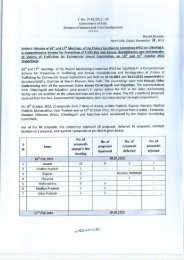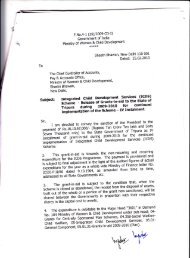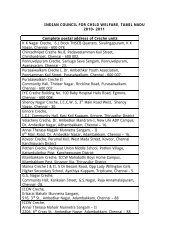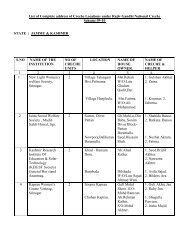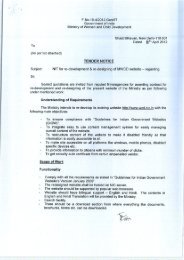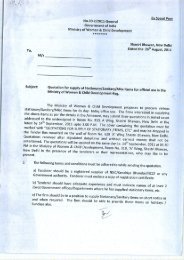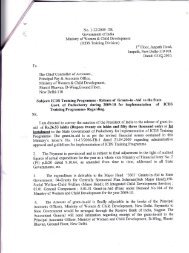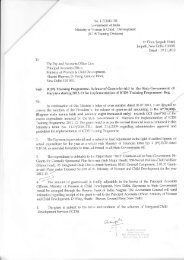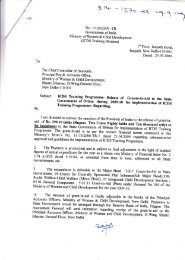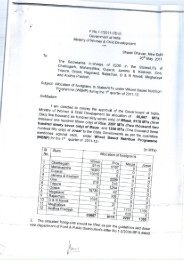COVER HINDI - Ministry of Women and Child Development
COVER HINDI - Ministry of Women and Child Development
COVER HINDI - Ministry of Women and Child Development
- TAGS
- hindi
- ministry
- wcd.nic.in
You also want an ePaper? Increase the reach of your titles
YUMPU automatically turns print PDFs into web optimized ePapers that Google loves.
Complete<br />
Budget<br />
Macro Level<br />
Gender<br />
Budgeting<br />
Micro level<br />
Sectors<br />
Spatial Mapping <strong>of</strong><br />
Infrastructure<br />
(Water Sanitation, Electricity,<br />
Roads) &<br />
Employment Opportunities<br />
Synergy in allocation <strong>of</strong><br />
resources across<br />
levels <strong>of</strong> governance,<br />
programmes<br />
<strong>and</strong> Departments<br />
Take in to account<br />
regional imbalances/<br />
geographical constraints<br />
Gender Responsive<br />
Administration<br />
Beneficiary Needs assessment at<br />
field level<br />
Impact Assessment <strong>of</strong><br />
Schemes/Programme/ Delivery <strong>of</strong><br />
Services<br />
Box - 7 : Gender Budgeting- an Action Plan<br />
MACRO LEVEL INITIATIVES<br />
• This entails preparation <strong>of</strong> a Gender Based Pr<strong>of</strong>ile <strong>of</strong> Public<br />
Expenditure- This serves as a situational analysis/Benchmark to<br />
identify gap areas in resource allocation for women<br />
• The exercise could be carried out for the entire Budget <strong>of</strong> a<br />
State or M inistry or for specific Sectors<br />
• Identification <strong>of</strong> gaps w ill enable enhancing / re-prioritizing<br />
allocation <strong>of</strong> resources towards women’s empowerment<br />
• Monitoring flow <strong>of</strong> funds, gender friendly implementation<br />
<strong>and</strong> achievement <strong>of</strong> outcomes is an integral part <strong>of</strong> gender budgeting<br />
M ICRO LEVEL INITIATIVES<br />
• Spatial M apping <strong>of</strong> resources available for women<br />
in the villages <strong>and</strong> tow ns <strong>and</strong> benchmarking public<br />
expenditure necessary to ensure adequate availability <strong>and</strong><br />
access to essential services like health, education, water<br />
sanitation, fuel <strong>and</strong> employment gives a realistic picture <strong>of</strong><br />
funds required for women.<br />
• The next step is to progressively translate gender<br />
based spatial requirements in to resource allocations <strong>and</strong> create<br />
synergy in Resource allocation across levels <strong>of</strong> governance to<br />
ensure universal coverage<br />
• Re-prioritize resource allocations to address- regional<br />
imbalances, infrastructure gaps<br />
• The stage <strong>of</strong> Designing schemes <strong>and</strong> programmes<br />
should incorporate gender concerns identified through<br />
Beneficiary Needs Assessm ent at the field level<br />
• Programmes may be Redesigned from gender<br />
perspective- build in wom en’s participation<br />
• Affirmative action may be taken to address gender<br />
barriers in access to public expenditure<br />
• Relentless monitoring <strong>and</strong> impact assessment <strong>of</strong><br />
implem entation <strong>and</strong> outcom es would enable suitable<br />
corrective action<br />
Gender Budgeting - Budgeting for Gender Equity 103



